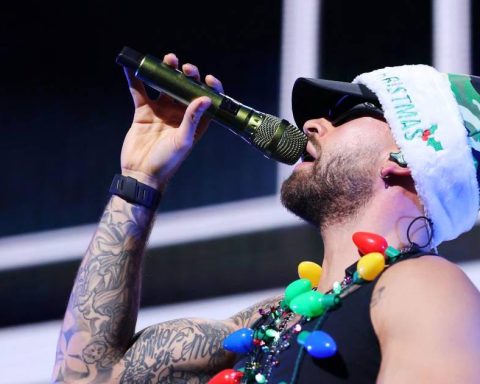Like several countries in the region, Colombia turned to the left in the last elections, and after a month in the Presidency, there are several signs that the market already has about what the government of Gustavo Petro will be like and the measures with which it is advancing in relation to the stability of public finances.
(Experts analyze the effects of the wealth tax).
Andrés Pérez Mora, chief economist for Chile and Colombia at Banco Itaú, spoke with Portafolio about the challenges that the economy is experiencing in the face of the new government, about how he sees the tax reform proposal and the situation of the country versus the region.
How do you see the economy received by the government of Gustavo Petro?
The Colombian economy comes with an outstanding performance, especially after the recovery in the second half of last year. I believe that this boom in activity is driven, or sustained, especially by private consumption, given that there are still investment indicators that remain below the pre-pandemic level, especially in construction and other works, for example.
We are entering the upper part of the cycle, and there is also a major slowdown ahead, we are in an economy that is growing above what is sustainable over time, and it is necessary to ensure that economic activity converges at more manageable rates.
How do you perceive Colombia compared to other countries in the region?
The Colombian economy is set to grow at rates close to 7% this year, and that, after growing in double digits last year, is robust growth.
(Colombian economy would grow 6.1% in 2022, estimates the OECD).
Ideally, we would love to grow at these rates permanently, but the truth is that the productive capacity of the economy does not allow it, so a slowdown process is coming.
And from that point of view, the key is to ensure that this slowdown occurs gradually, without sudden adjustments. In general, as international experience has shown, when very sharp slowdowns occur, they are accompanied by a rise in the unemployment rate.
What does Colombia need to achieve this “healthy” slowdown?
It is necessary to contribute to stabilization through the combination of short-term macroeconomic policies, but also thinking about long-term growth. The authorities have indeed targeted that direction.
By the way, what the Banco de la República has done takes precedence, a significant adjustment of the monetary policy rate, and that over time should tend to moderate the growth of domestic demand and stabilize it.
That on the side of local economic policy, but there are many things that are out of hand, basically the FED is the one that puts the music on international financial conditions and we must seek to ensure that conditions abroad can somehow adapt with the ‘buffers’ (shock absorbers) that the local economy has, but clouds are indeed coming on the external front.
What measures could the central government take to keep the economy on a favorable growth path?
In the medium term, the key is to ensure that public finances are sustainable. That is to say, that the public debt stabilizes over time, and in this sense, the fiscal consolidation that is being considered is necessary. Now, progress must be made in balancing public finances, considering the needs of citizens as well, but that is not easy, especially with external financial conditions that are going to become increasingly challenging.
Several countries in the region have been promoting tax reforms, how do you see from Itaú the one that Colombia is processing today?
It is a tax reform that aims to collect 1.4 percentage points of GDP. What is relevant is that it aims to finance permanent spending with permanent income, that is what has been proposed, and that precisely aims to contribute to the stabilization of public debt over time, to the sustainability of public finances.
(The economic growth of Colombia, year by year).
Now, the authority has indicated that it is open to discussing adjustments to the reform that contribute to boosting investment over time, while collecting more.
Colombia receives its first leftist government, what effect can this political stance have on the economy?
Different countries have sought to advance the desires of citizens, and governments are taking charge in a fiscally responsible manner, seeking to respond, but in a sustainable manner over time and naturally there are different tools and horizons with which they seek to respond. Here we are talking about a collection of 1.4 points of GDP per year, but in Chile, for example, it is much higher, 4.1 points per year. The key thing, I think, is to effectively seek to respond to those demands of the citizenry, but also seeking growth and fiscal sustainability.
How do you see the inflationary outlook for the country?
Inflation is a global phenomenon, which in part reflects the imbalances that have been accumulating due to the different shocks that the world economy has received, which have been happening in a surprising manner over time.
In the case of Colombia, inflation has indeed increased, especially in the case of food, which is a concern, but what is relevant is that the authorities have taken measures to ensure that inflation returns to levels consistent with the inflation target for the Bank of the Republic.
In any case, we expect it to go down over time towards the end of the year, but remain above the target range of Banco de la República.
What is relevant is to continue monitoring inflation expectations two years ahead.
Laura Lucia Becerra Elejalde

















